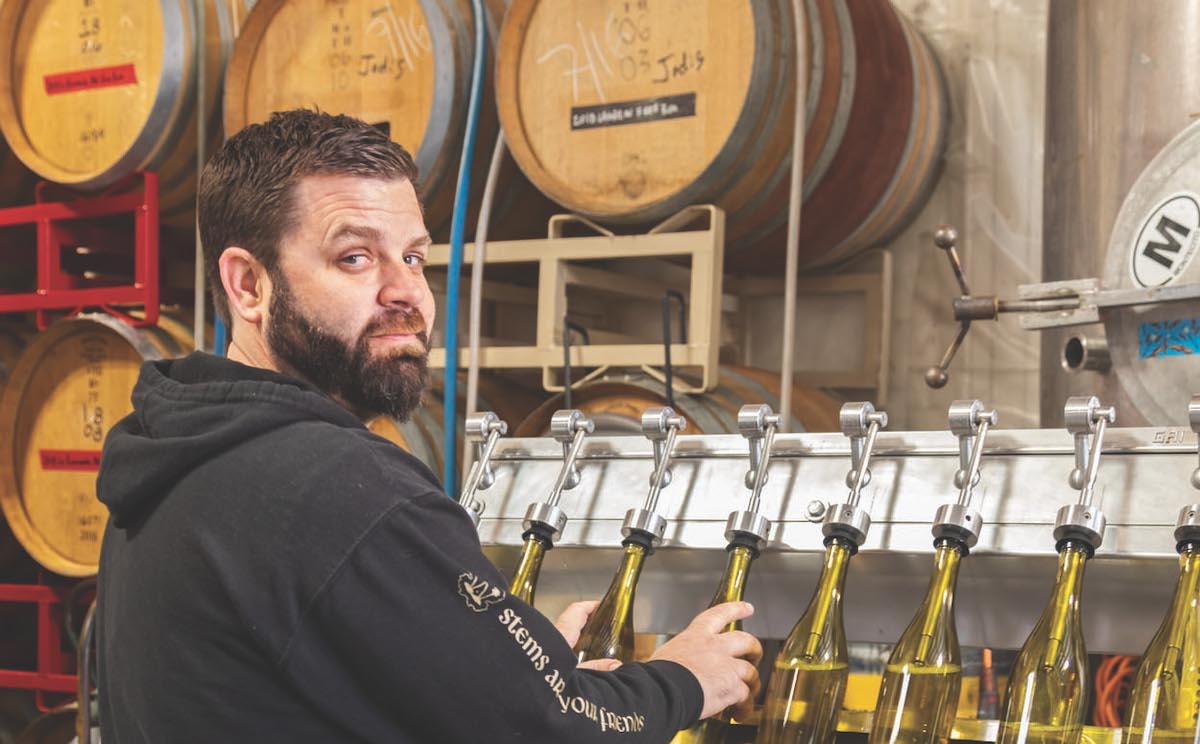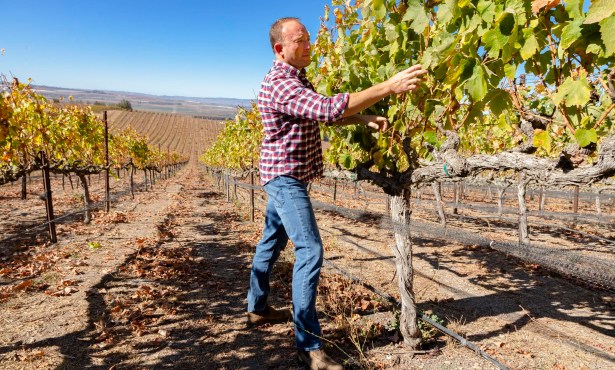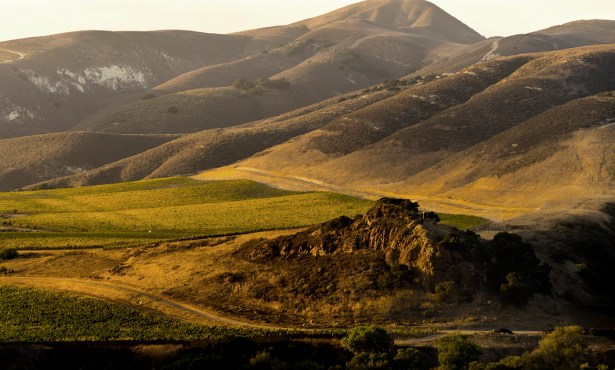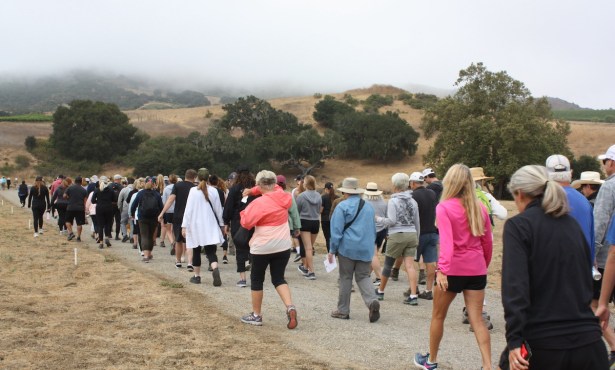Drake Whitcraft Revives His Dad’s Legacy
From Pioneer Winemaking Father to Vanguard Son in Santa Barbara

What follows is an edited excerpt from Vines & Vision: The Winemakers of Santa Barbara County, published in 2020 by Matt Kettmann and Macduff Everton.
After years of working at Mayfair Wines, Santa Barbara’s top bottle shop in the 1970s and ’80s, Chris Whitcraft launched his own label in 1985 and quickly became one of California’s most influential winemakers.

Among other game-changing moves — a practice he started as a retailer, being the earliest to sell pinot noir powerhouse Williams Selyem in Santa Barbara — Whitcraft was the first winemaker in the state to block-designate a wine, putting the Q Block from Bien Nacido Vineyard on the label of his 1991 pinot noir. Today, block designating is commonplace, and Whitcraft, who passed away in 2014, sits among the upper echelon of chardonnay and pinot noir producers in American history.
But if it wasn’t for his son, Drake Whitcraft, there’d be no Whitcraft Winery at all.
“I didn’t pay myself for seven years,” explains Drake, of how he saved his dad’s legacy, a project that started long before Chris passed away, when the winery was mired in debt. “I lived in my mom’s house in a tiny room. I didn’t go anywhere,” said Drake. “I just made the winery work, and it’s finally working.”
Born in Long Island but raised in Pacific Palisades, Chris Whitcraft followed his would-be wife, Kathleen Barnato, to the Bay Area in the early 1970s, where she attended San Jose State and he got into Santa Cruz Mountains wine. When she got a job teaching in Santa Barbara, Whitcraft pleaded for a job from Mayfair’s owner, Frank Miller, who became a strong supporter for many years.
“The only job opening that Mayfair had was janitor,” says Drake. “He took that job, but within a year, he was the wine buyer and store manager.”
Whitcraft held tastings in the basement of the store, bringing together a brain trust of the early Santa Barbara wine scene, from producers like Jim Clendenen, Adam Tolmach, and Fred Brander to other influencers like Jim Fiolek, Bob Senn, Antonio Gardella, and Blake Brown. “A bunch of the OGs,” explains Drake.
After a few noncommercial stabs — including a chardonnay named after Drake in 1982, his birth year — Whitcraft Winery began in 1985 with a focus on chardonnay. That held true until 1990, when Chris made his first pinot noir. When the 1992 Q Block pinot won critical acclaim, it was “pretty smooth sailing through the 1990s,” recalls Drake.
After graduating high school in 2000, Drake worked the following fall harvest and then started attending Santa Barbara City College. But in 2001, Chris was needing help, so Drake ditched plans to go to a UC and began running the winery full-time with his dad. He was 19 years old. In 2005, after years of production in other winemakers’ facilities, Whitcraft Winery finally leased its own home, across from a cement factory and just blocks from the beach in Santa Barbara. But Chris’s health declined two years later. “I took over again,” said Drake. “In 2008, I realized that I needed to change everything.”
That led to father-son clashes on almost every aspect of the winery, particularly disagreements over wholesale versus direct-to-consumer sales. “We had such a different opinion on how to run the business,” said Drake, who saw the tasting room and wine club models as key to financial sustainability. “He just didn’t want to change. He literally had a bat in the tasting room that said ‘Wine Club’ on it. When people asked about joining a club, he picked up the bat.”
Sign up for Indy Today to receive fresh news from Independent.com, in your inbox, every morning.
The recession in 2008 further decimated the business, causing many longtime vineyards to cut their ties with Whitcraft. The winery eked out a little wine in 2009, but made only enough to keep the Whitcraft bond active in 2010, and then dumped that wine. By 2011, Whitcraft Winery was in federal bankruptcy, and no one would sell Chris Whitcraft grapes.
“It didn’t look like it would be possible,” says Drake. “No one would even talk to me about fruit.”
Then he found a new property called Pence Vineyards, and bought enough grapes to make 80 cases. He made about 200 cases from various sources in 2012 and nearly doubled every year until reaching about 2,000 cases, which is where Drake would like to stay.
“I’m working with vineyards that I always wanted to work with,” added Drake, noting that some of the historic vineyards started selling him fruit again, especially after Chris died from recurrent health problems in 2014.
Along the way, Drake crawled out from under bankruptcy, paying the debts and getting the status officially expunged in 2017. “Bankruptcy used to be something I was embarrassed about,” he said. “But I’m proud that I pulled it off. I built this from the ground up.”
That reconstruction was not done by following the popular stylistic path. At a time when many cult wines were getting riper and riper, the younger Whitcraft eschewed richness, producing see-through pinot noir, gamay, grenache, and even syrah, all the while adhering to minerality as the driving force of his chardonnays. That’s struck a chord with many sommeliers as well as younger wine fans in search of fresher wines.
“I’ll never ever fuck with the wine; I never add shit,” said Drake, who’s also never bought new oak barrels, doesn’t own a pump or filter, foot stomps his grapes, and uses gravity to move the juice. “We are not aiming to make natural wines, even though a lot of my wines fall into that category.”
Such methods are the key to transparency, allowing wines to reflect the vineyard. “I make everything the same,” he says. “It’s not to be dogmatic or lazy. It’s to show the site.”
And picking early, when acids are high and brix are low, ensures a cleaner end result. “Low-brix wine is someone who runs marathons, while high-brix wine is someone who eats McDonald’s every day and has diabetes — the wine can get sick and have problems,” said Drake, who believes such a style makes his job easier. “I don’t have to be a scientist. I don’t have to do anything. I just have to pick at the right time. I have no idea why people make super gnarly wine. They’re so much harder to make. Low-brix wine makes itself and makes itself beautifully. If you’re buying from the right vineyards, there is nothing to fix.”
These days, while the winery remains on Calle Cesar Chavez near the Santa Barbara waterfront, Drake lives with his wife, Eliana, and their baby girl at their home in Solvang, where they tend to a quarter-acre vineyard of trousseau, which yields about a ton of fruit each year.
“There have been low points where I thought I would fail, but I had to build my winery through business rather than borrowing,” he said. “I would rather have my dad around for longer and be making wine with him, but everything turned out the way it was supposed to work out.”
See whitcraftwinery.com.
Support the Santa Barbara Independent through a long-term or a single contribution.




You must be logged in to post a comment.